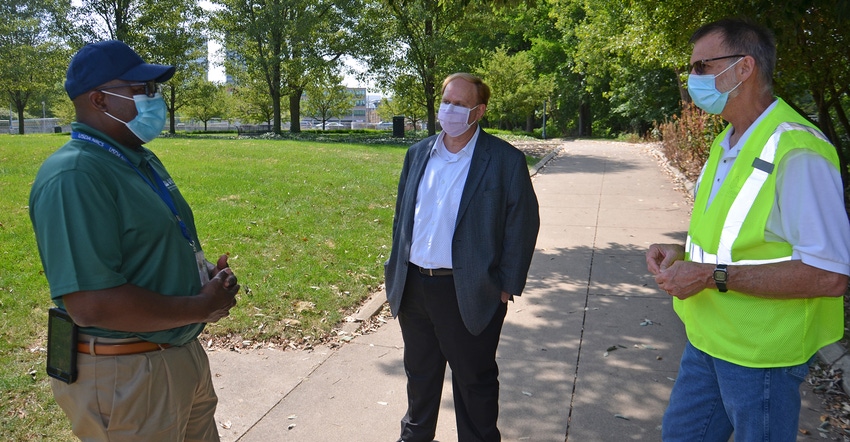
Sewer and stormwater systems were built in many large Indiana cities decades ago. In Fort Wayne, water quality wasn’t even a blip on the radar when its system was built. Stormwater and sewage discharge mixed. When big rain events occurred, the system would overflow, dumping stormwater and untreated sewage into rivers. When three rivers run through your city, that’s a problem.
“That’s where we started when federal agencies demanded changes,” explains Frank Suarez, director of public information for the city of Fort Wayne. “It took 11 years to reach an agreement, and we began implementing the plan a few years ago.”
Recently, Suarez and Michael Kiester, manager of city utilities engineering for Fort Wayne, explained the project to Jerry Raynor, Indiana state conservationist with the Natural Resources Conservation Service. Raynor visited Fort Wayne to tour the rivers and learn about the city’s efforts. Indiana Prairie Farmer listened in. Here are answers to key questions:
What progress have you already made on reducing sewage discharge into the rivers?
Kiester: We did separation projects and separated sewer water from stormwater on drains which were discharging into the St. Joseph River. That is where the city’s water filtration plant pulls water for drinking water. So, sewage water no longer discharges into the St. Joseph.
Suarez: Thanks to that work, we have not had any sewer discharge events during peak rain events into the St. Joseph River in the past three years. We are allowed one discharge event per year under EPA guidelines.
How will you handle stormwater and sewage water that dumps into the other rivers?
Kiester: We are building a tunnel system 240 feet below ground. Engineers found the right kind of bedrock, which isn’t porous at that depth. The tunnel is 16 feet in diameter and will be 5 miles long when completed. It follows the course of the river. There will be seven deep shafts, which allow water to flow down and into the tunnel instead of discharging into the river during overflow rain events.
Suarez: Once the overflow event is over, water from the tunnel will feed into the wastewater treatment plant and be treated before it is discharged into the river. The tunnel is not really storage space because water feeds by gravity into wet water pumps, and into the plant for treatment.
What is the status of this project today?
Kiester: As of Aug. 10, boring of the tunnel was 48% complete. We are also working on the shafts, which will capture water on the surface and allow it to drop underground. The target is to finish construction in 2023 and have it fully operational by 2025.
Suarez: Once operational, it will greatly reduce the number of overflow events where untreated sewer water discharges into a river. At that point, we will be allowed four such discharges per year by EPA — a vast improvement over where we were originally.
Who is paying for this massive project?
Suarez: Ratepayers are paying for it. It required nearly a threefold increase in sewer rates, but they were phased in over five years. We started to get some pushback, but we reached the highest rate this year.
About the Author(s)
You May Also Like




